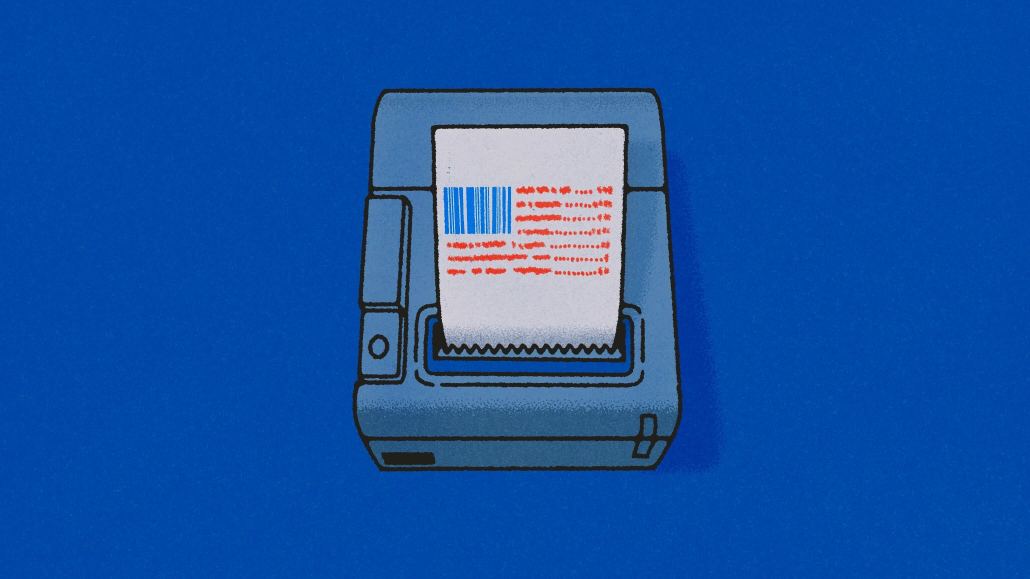Connect with execs from The New York Times, TIME, Dotdash Meredith and many more
As the presidential election approaches, where do influencers come in?

Influencer marketing is playing a bigger role in politics and elections as more events and organizations open doors to content creators. This is becoming especially clear as the 2024 presidential election approaches in the U.S.
This month, as the White House and the Democratic National Convention both invite influencers to join their events (the Republican National Convention did the same last month), influencer agencies cite a growing appetite for political and nonprofit organizations to beef up their digital and influencer marketing strategies.
On Aug. 14, the White House organized a Creator Economy Conference in which creator network Good Influence helped recruit participants — and it’s a part of the administration’s effort to expand its digital presence by having creator involvement, said Josh Cook, Good Influence’s president. The company focuses on news and progressive issues, working with some 300 creators who generate more than 150 million views a day, and partnering with organizations including the Environmental Defense Fund and United We Dream.
“[Influencers are] where a lot of people are getting their news day to day, are trying to learn about issues day to day,” Cook told Digiday. “I think what the DNC is doing with the convention is just trying to make that easier for those creators — and that’s a super powerful thing in a fragmented media space.”
This comes as the share of U.S. adults who regularly get news via TikTok has increased significantly, from 3% in 2020 to 14% in 2023, according to the Pew Research Center. While there is no estimate on what proportion of social and digital ad dollars during elections is allotted to influencers, the Democratic Majority Action PAC reportedly offered influencers between $300 and $500 per post in 2022, for instance. Additionally, the NextGen PAC allocated about $2 million during that campaign cycle for its digital and influencer programs partnering with college athletes and other TikTok creators.
DNC coverage adds legitimacy
This year, the DNC is for the first time offering credentials to content creators for the first time, as organizations aim to engage younger audiences. The media access will give creators the opportunity to connect with attendees and get logistical support. Good Influence will possibly send up to 100 creators to the convention, which begins next week, each focusing on different subjects, people and issues. In previous years, social media coverage of the event mostly reflected broadcast and mainstream media outlet coverage — and 2020 was all virtual, Cook explained.
“This time, everyone’s got a channel,” Cook said.
Good Influence’s creators on the ground will include Brian Tyler Cohen, Tizzyent and Conscious Lee. Cook sees this credential opportunity as a “big legitimizing moment” for creators in the political arena — but also potentially introduces different payment models for different types of creators.
“It confirms what I think a lot of people already know: they’re talking to every voter,” Cook added. “I think every influencer we talked to wants to do more. … If you’re selling shoes as an influencer, there’s a very clear model for how that works and how you get compensated. If you’re just trying to educate your audience about specific issues, it’s much more complicated on how the compensation works.”
The Republican National Convention in July also invited some 70 influencers as part of a content creator program to reach more young voters. Creators were given time to go on the floor and make content using a Creator Hub.
Jared Silverman, senior director of paid media at digital marketing agency NP Digital, also acknowledged that influencers are having an increasing impact on elections. Silverman compared influencers’ connections with their communities as “what used to be door-to-door campaigning” — especially when it comes to engaging Gen Z, millennials and Gen Alpha to “organically [feed] into their interests and algorithmic feeds.”
“The timing is contextually relevant, because this is how elections are won,” Silverman added. “Micro-influencers bring authenticity and have a stronger impact on undecided voters.”
Political influencers by the numbers
Interest in political content overall is on the rise too. Research from influencer agency Billion Dollar Boy revealed this month that 28% of U.S. creators have been approached by political organizations to make content going into the presidential election.
More than half of U.S. voters said they welcome political creator content, with consumers favoring organic content, according to BDB’s survey of more than 4,000 consumers and 500 content creators in the U.S. and U.K. from May to June 2024.
Organic political content would encourage 36% of U.S. voters to participate in an election, while half (52%) of U.S. voters want creators posting political content during an election year, whether paid or organic, according to the survey. In particular, the favorability toward political creator content during elections is higher with younger respondents — up to 76% among 16-to-24 year olds, and up to 51% among male respondents.
“Influencers are so effective at reaching and persuading the crucial youth vote — and with young voters increasingly turning to social media for information over traditional channels, it’s no surprise that influencer marketing is having its biggest role yet this election year,” said Thomas Walters, CEO and co-founder at Billion Dollar Boy.
However, Walters noted some differences between the Republican and Democratic influencer marketing strategies.
“The Democratic party seems to focus more on mid-tier creators to get the vote out while also prioritizing organic support,” Walters said. “We’ve seen a strong feedback loop of content creation from creators of all sizes as well as traditional celebrities for Kamala Harris — and according to our data, this type of organic political creator content is the most effective at encouraging voters to participate in the election.”
On the other hand, he added, “we see the Republican party working with macro-influencers directly who have a vast reach and large following, like Jake Paul and controversial influencer Adin Ross … as well as celebrities like Hulk Hogan.”
Additionally, BDB’s research found that two in five U.S. creators (39%) have been approached by political organizations to make political content during this year’s election and previous elections. Roughly the same portion (43%) of U.S. creators said they haven’t been approached yet, but are open to creating political content in the future.
Cook agreed that this engagement in political influencer content will continue growing — especially as influencer marketing can allow different candidates and campaigns with fewer resources to tap into this part of their online strategies. This year, more than $12 billion is expected to be spent on political advertising.
“Big national [campaigns] can put resources … but statewide races, people running for Congress, things like that, they have limited resources,” Cook said. “The amount of energy and effort that they can put into things like developing a creator strategy are new concepts. I think this cycle, some folks are really investing in [influencers] — and sort of making big investments in the idea, and others are sort of watching and seeing how it plays out.”
More in Media Buying

Media Buying Briefing: Are holdcos at a tipping point, or is this just another bump in the road?
WPP picks its new CEO but has a struggling business to shore up, while Omnicom and IPG deal with losing key executives in the leadup to their union.

Omnicom confirms the pending exit of influential Annalect chief Slavi Samardzija
The CEO and architect of Omni departs, hinting at pending changes as Omnicon continues $13.5 billion IPG takeover bid.

WPP has its next CEO – but what do clients make of the heir apparent?
The ad industry’s hot take industrial complex went into overdrive upon yesterday’s WPP coronation. Clients are keeping their counsel, however.






